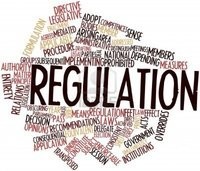The US Food and Drug Administration (FDA) has issued new draft guidance intended to help companies determine whether to submit an abbreviated new drug application (ANDA), i.e. 505(j), or a 505(b)(2) application.
FDA draft guidance clarifies when a 505(b)2 application can be submitted
Home/Guidelines
|
Posted 20/10/2017
 0
Post your comment
0
Post your comment

The draft guidance was published in a Federal Register announcement on 13 October 2017. It highlights criteria for submitting applications under the abbreviated approval pathways described in section 505(j) and 505(b)(2). The draft guidance identifies considerations to help potential applicants determine whether an application would be more appropriately submitted under section 505(j) or pursuant to section 505(b)(2) of the Federal Food, Drug, and Cosmetic Act (FD&C Act).
Determining whether to submit an ANDA or a 505(b)(2) application
Date: October 2017
https://www.fda.gov/downloads/Drugs/GuidanceComplianceRegulatoryInformation/Guidances/UCM579751.pdf
The 505(b)(2) pathway comes under new drug applications (NDAs), but is designed to allow the approval of a drug which is not new, but differs in several meaningful aspects via an abbreviated pathway. Applications included in this pathway generally include changes to previously approved drugs, such as changes to the recommended dose, formulation, route of administration, strength or the drugs with which it is combined. In a 505(b)(2) application the sponsor relies upon clinical data or literature produced by other companies or entities.
This new draft guidance sets out the regulatory considerations for drugmakers considering one of the two pathways. It makes it clear that the agency ‘generally will refuse to file a 505(b)(2) application for a drug that is a duplicate of a listed drug’. Such applications should be made via the ANDA [505(j)] pathway. The exception to this is when an applicant seeks approval for multiple drug products containing the same active ingredient(s) where some qualify for approval under the 505(j) pathway and some under the 505(b)(2) pathway. In such cases the agency says it will allow an applicant to submit a single 505(b)(2) application.
FDA Commissioner Dr Scott Gottlieb, commented on the new draft guidance, saying that ‘by providing greater clarity and direction to prospective drug applicants, we hope to help reduce the cost and barriers to bringing new generic medicines to patients’.
FDA has released the draft guidance for a comment period of 60 days, i.e. until 12 December 2017. Comments can be posted to the Dockets Management Staff under Docket No. FDA-2017-D-5974. This can be done via the website www.regulations.gov or written comments can be mailed to Dockets Management Staff (HFA-305), Food and Drug Administration, 5630 Fishers Lane, Rm. 1061, Rockville, MD 20852, USA.
Related article
US guidelines for generics
Permission granted to reproduce for personal and non-commercial use only. All other reproduction, copy or reprinting of all or part of any ‘Content’ found on this website is strictly prohibited without the prior consent of the publisher. Contact the publisher to obtain permission before redistributing.
Copyright – Unless otherwise stated all contents of this website are © 2017 Pro Pharma Communications International. All Rights Reserved.
Source: Federal Register, US FDA
Policies & Legislation
ANVISA tackles 24-month backlog in biologicals post-registration petitions
US EO: delivering Most-Favored-Nation Prescription Drug Pricing to American patients
Most viewed articles
The best selling biotechnology drugs of 2008: the next biosimilars targets
Global biosimilars guideline development – EGA’s perspective
New guidance for biologicals in Pakistan and Hong Kong’s independent drug regulatory authority

Home/Guidelines Posted 20/10/2025
Canada poised to remove requirement for Phase III trials for biosimilars

Home/Guidelines Posted 22/07/2025
The best selling biotechnology drugs of 2008: the next biosimilars targets








Post your comment